Akoya pearls are the quintessential, classic pearl… they’re the pearls we think of when we picture pearls in our mind.
From Marylin Monroe, Jackie Kennedy to current royals, celebrities and the girl next door, Akoya pearls have been worn and loved ever since they were first cultured back in the early 20th century.
It’s easy to see why they’re the most popular pearl variety – affordable, lustrous and beautiful.
Here’s a rundown on everything you need to know about buying, wearing and properly caring for Akoya pearls.
Why Choose Akoya Pearls?
Akoya pearls were the first pearls to be cultured and by extension, the first to be accessible to the masses. They’re the classic white pearl in terms of shape, size, luster and affordability.
Here’s a quick summary of what makes Akoya an excellent choice:
- Extremely lustrous and reflective
- Range of natural and dyed colors to choose from with beautiful overtones
- Almost always round but also come in free-form and baroque shapes
- More affordable than other saltwater pearl varieties
- The most traditional pearl
- Easy to style
- Matches all skin tones
Akoya Pearl Characteristics
Although we tend to have a stereotypical image of Akoya pearls, they range in color, size, shape and overtone. Here’s a quick rundown:
Akoya Pearl Size:
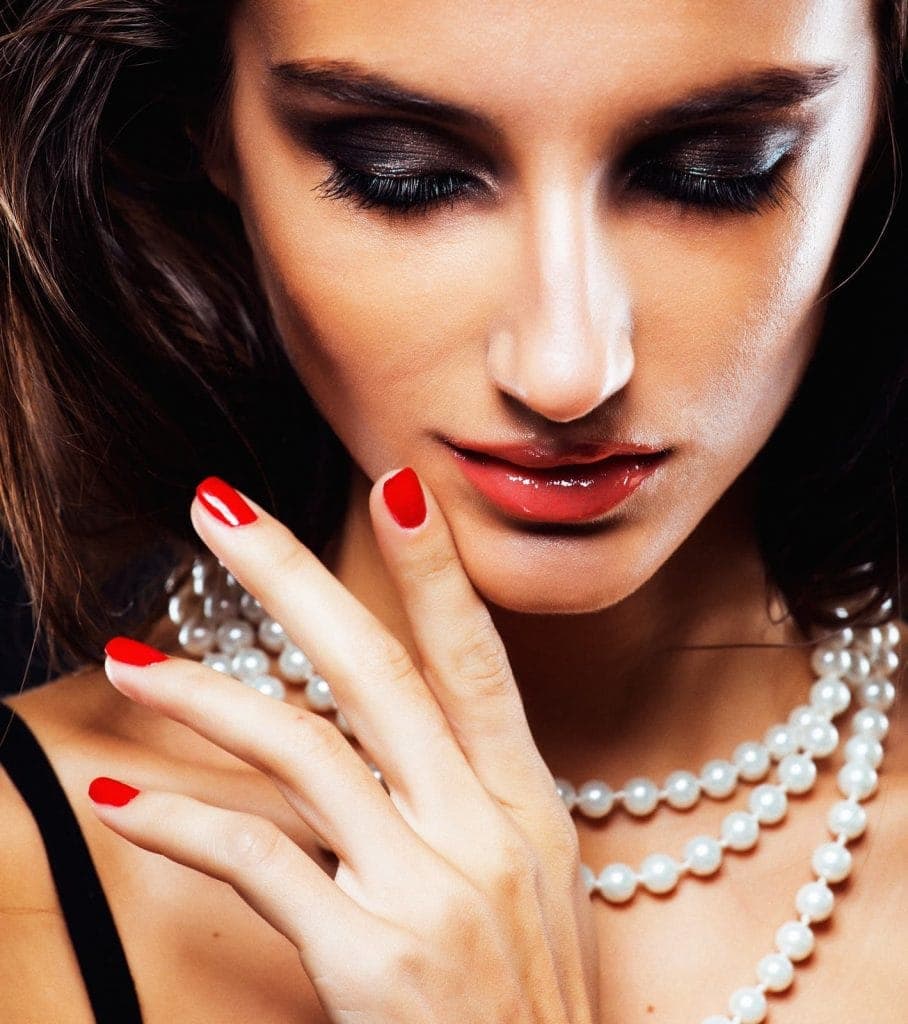
The Akoya pearls are typically small, ranging from 1 mm to around 9 mm. Sometimes they can grow to around 11 mm, but these are very rare. Compare this to the South Sea pearl which averages 12 mm to 13 mm and can grow up to 20 mm!
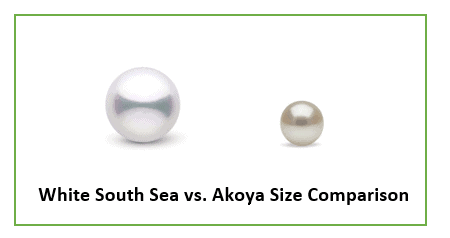
The Akoya pearl size is perfect for the standard pearl necklace, stud or bracelet strand and is easy to wear with any outfit for any occasion.
Akoya Pearl Color and Overtone:
Yes, white is the Akoya color that we know and love, but these pearls come in a range of colors from white to black.
White Akoya pearls have three main overtones – rose, silver and cream with rose being by far the most popular type.
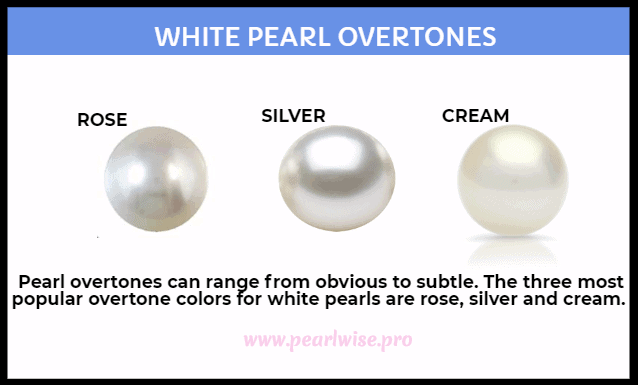
Sometimes, you’ll find natural blue Akoyas which are extremely rare and expensive, but these are usually snapped up quickly when they get on the market. A fun piece of trivia – experts believe that blue pearls occur when the oyster suffers from a metabolic disorder. Not so glamorous but the pearls sure are gorgeous!
Black Akoya pearls are lovely to look at but note that they’ve been dyed. Akoya oysters cannot create dark pearls, so if you’re looking for naturally occurring dark pearls Tahitian are your best option.
Akoya Pearl Shape:
Again, the default shape for pearls is perfectly round and that’s what most people look for. Perfectly round pearls always cost more than irregular shaped pearls, all else being equal.
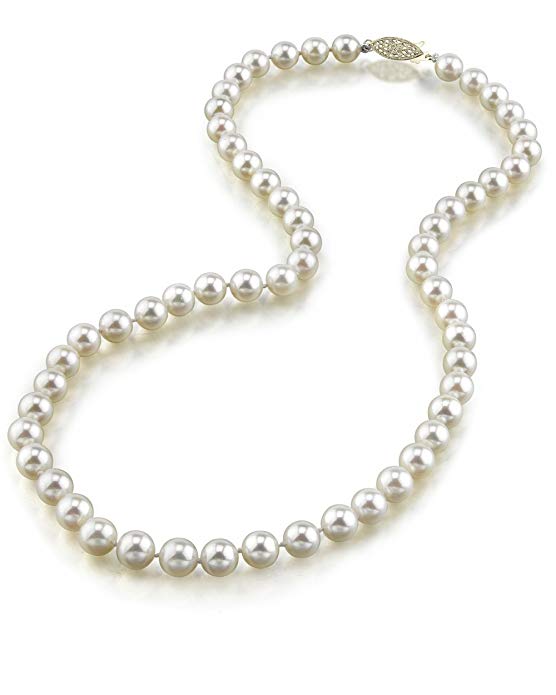
The perfect Akoya pearl strand. See it here.
Unlike most other pearl types, Akoya pearls are typically round because they’re bead nucleated, making it easy to create pearl strands of identical pearls.
However, Akoya pearls also come in a wide range of irregular shapes. With the interest in baroque pearls at a high, these flawed pearls are highly sought after by pearl lovers and jewelry designers alike as they are perfect to use when creating unique jewelry designs. The shapes include baroque, free-from as well as keshi pearls (pearls without their nucleus).
Akoya Pearl Luster:
Akoya pearls are highly lustrous and can (almost always) beat even the best pearls out there.
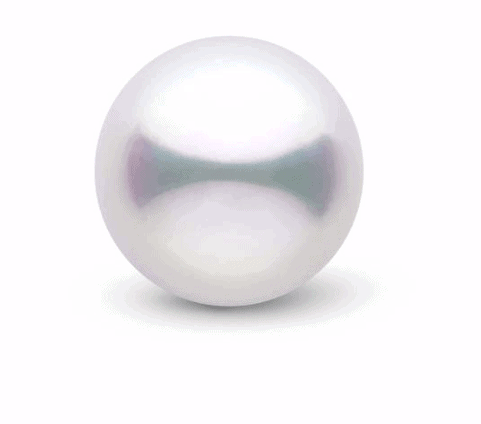
The luster is due to the light interaction with the nacre of the pearl and to the farming conditions of the pearl. Akoya pearls are located in areas where water is much cooler, which alters how the nacre is secreted and creates a much more compact pearl.
Pearls like White South Sea get their high luster from thicker nacre, but although Akoya pearls have thinner nacre, they typically have the best shine. They’re so reflective that you’d typically be able to see yourself in high quality Akoya pearls.
Are Akoya Pearls Valuable?
On the pearl price spectrum, Akoya sit above freshwater pearls but below Tahitian and South Sea pearls.
They’re not as affordable as freshwater pearls, but their superior luster and beauty make them the favorite choice for most people.
To compare, a 17-inch, 8-10 mm pearl necklace Akoya necklace would cost on average $1200, a similar freshwater strand would only cost $300 while a White South Sea would fetch $5000.
These are averages based on a quick internet search but they give you a good idea of the value assigned to each pearl variety.
There are other factors that affect the overall price of pearl jewelry, including quality of metals used, brand name overall workmanship.
How to Choose Akoya Pearl Jewelry
Akoya pearl jewelry come in all styles and designs, from vintage to contemporary. The most popular type of Akoya jewelry is…. you guessed it – the classic pearl strand.
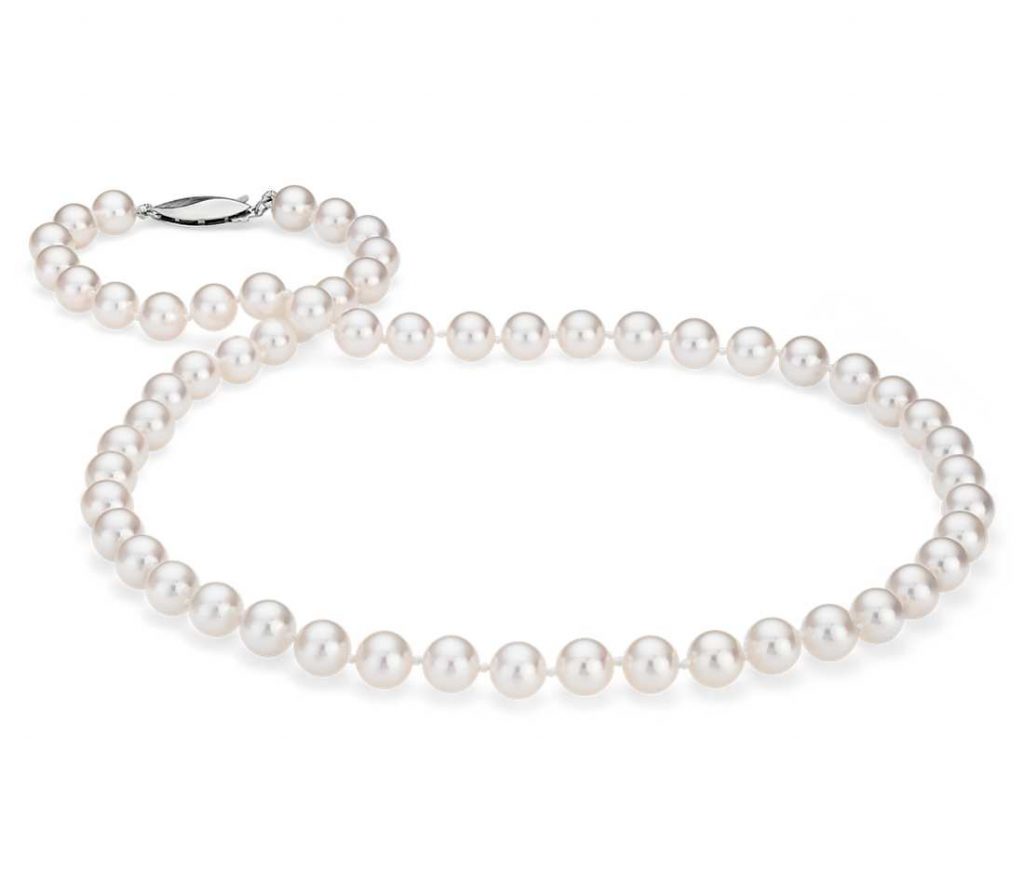
Akoya necklace strands can come in a few different styles:
- Graduated pearls
- Perfectly identical pearls
- Baroque Akoya pearl strands
Akoya pearls are also ideal for layering or as opera or rope length strands. The pearls are typically knotted in between each other to ensure the durability of the strand.
Akoya pearl bracelets are perfect whether single or in several layers to instantly add a ‘wow’ factor to your look.
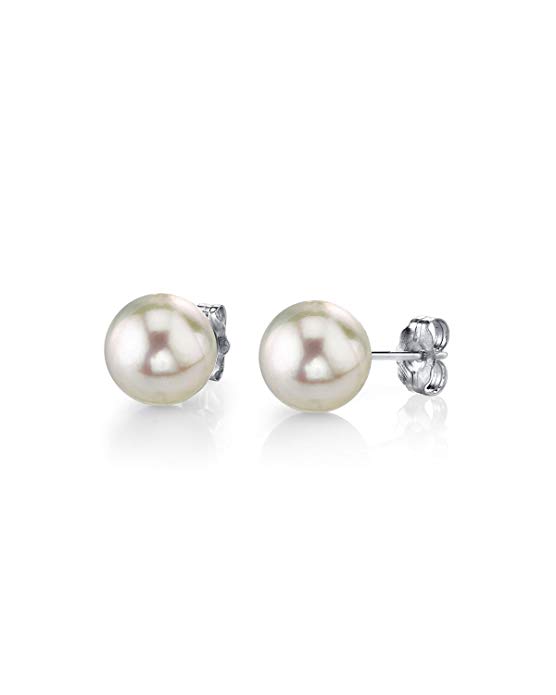
Classic Akoya pearl studs. See them here.
For earrings, dainty Akoya pearl studs or diamond halo studs are perfect for everyday or workwear. Dangle and chandelier pearl earrings take it to the next level and are ideal for formal events.
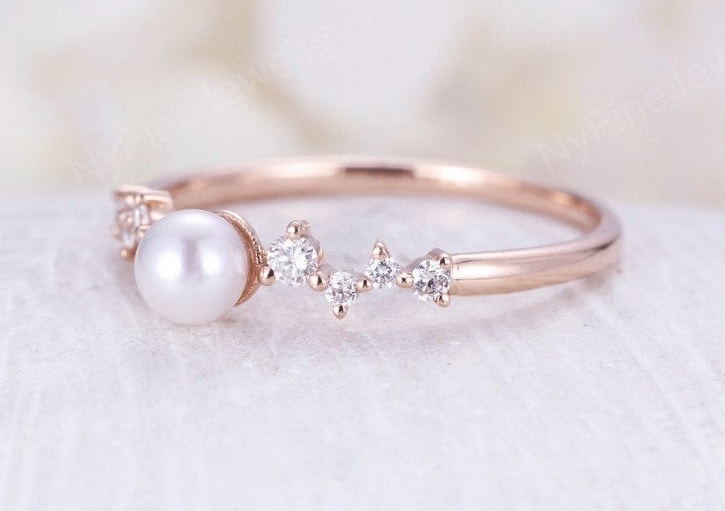
Beautiful pearl engagement ring. See it here.
Akoya rings are beautiful and delicate, but they need to be taken care of as the pearl can get damaged in such an exposed location.
Some people want pearl engagement rings and typically look for Akoya pearls. While we don’t recommend pearl engagement rings because of their fragility and low durability, it’s easy to see why people want them. They’re beautiful, feminine, delicate and unique.
Akoya pearl eternity rings are also a stylish way to wear pearls in your rings and can make a good wedding ring.
Pairing Akoya pearls with diamonds adds brilliance to the pearl’s luster. Silver-hued metals look modern and give a contemporary touch to the design of the jewelry while rose or yellow gold adds a vintage look to the overall design.
Grading Akoya Pearls
Not every Akoya pearl is created equal, so having an understanding of pearl grading will help you to hone in on the right one for you.
Unfortunately, the pearl world, grading isn’t standard. There’s no accepted standard and each retailer can have their own grading methods. What’s considered a double A in one store might be a triple A in another.
So how do you know how to evaluate the quality of your Akoya pearl?
There two main types of grading systems used to grade pearls in general.
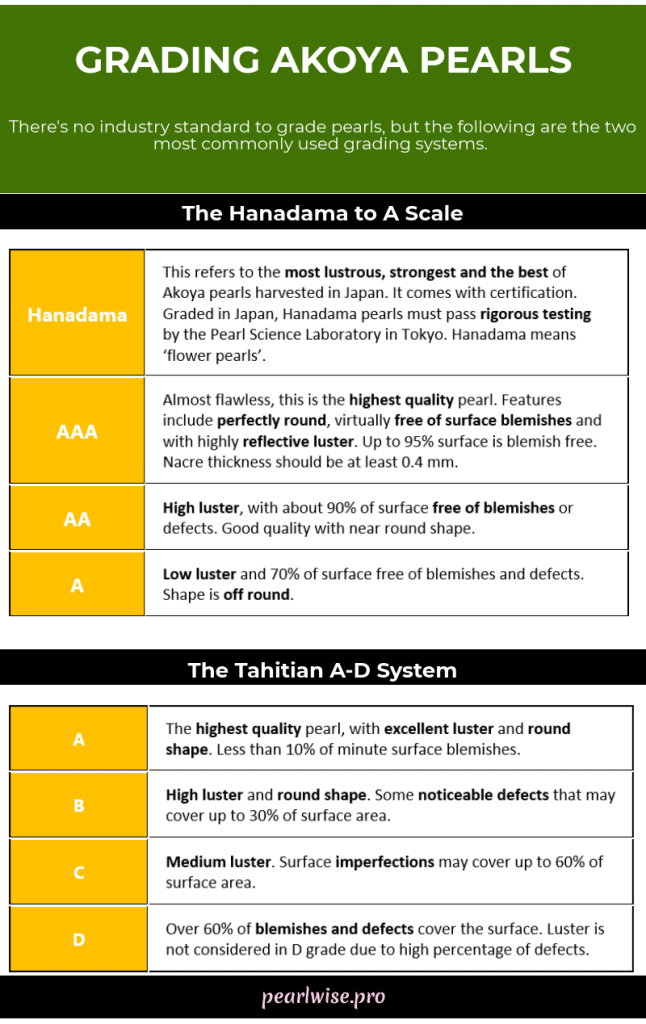
A couple of quick notes on this:
- Some retailers add their own categories to the scale, including AAA+ or AAAAA. They often do this to make it seem that their pearls are somehow much higher in quality than other pearls and then try to sell them for a premium. An uninformed buyer would naturally think that an AAAAA pearl at one shop is better than an AAA pearl at another.
- The Tahitian pearl grading system was created to maintain control over the quality of Tahitian pearls by the relevant French Polynesian authorities. Today it’s used to grade other pearl varieties as well, including Akoya.
Standard Akoya Pearl Treatments
Most pearls undergo some form of treatment to enhance their appearance. Akoya pearls are no different.
Akoya pearls are typically washed then bleached and pinked. The bleaching enhances the body color of the Akoya pearl and removes any slight blemishes.
The pinking process adds the blush and warmth that pearl lovers look for in Akoya pearls. It’s what gives the pearl its rosy hue.
This washing-bleaching-pinking process is standard practice and you won’t find mention of this on pearl certification because it’s considered a given.
Other treatments include dyeing to achieve certain colors like black and blue. This information should be disclosed to the buyer.
The Origins of Akoya Pearls
Before pearls were cultured, the only way to find pearls was by diving for them. This was dangerous and inconsistent work and finding good quality pearls was exceedingly rare.
As a result, pearls were extremely pricey and hard to come across, and were primarily the domain of royals and the nobility. In fact, at one point in history, only these classes were permitted to wear pearls! That’s how much pearls were valued in society.
However, all this changed with the successful culturing of pearls. Kokichi Mikimoto is considered the Father of Cultured Pearls for launching the cultured pearl industry based on his innovative oyster culturing methods.
While there are others who contributed to the process, Mikimoto was the one who created a standard process, commercialized the industry and expertly marketed the pearls.
As history has it, Thomas Edison said to Mikimoto:
This isn’t a cultured pearl, it’s a real pearl. There are two things which couldn’t be made at my laboratory–diamonds and pearls. It is one of the wonders of the world that you were able to culture pearls.
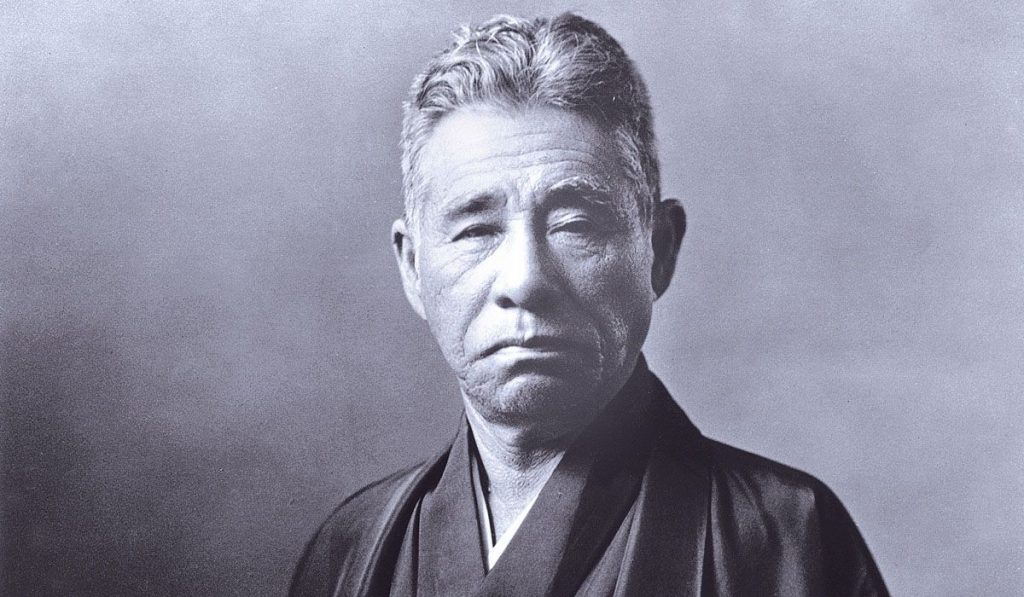
The man who changed the pearl industry, Kokichi Mikimoto
By the 1920s, Mikimoto’s cultured pearl jewelry was on the market and accessible to all. For the first time, pearls were affordable and plentiful.
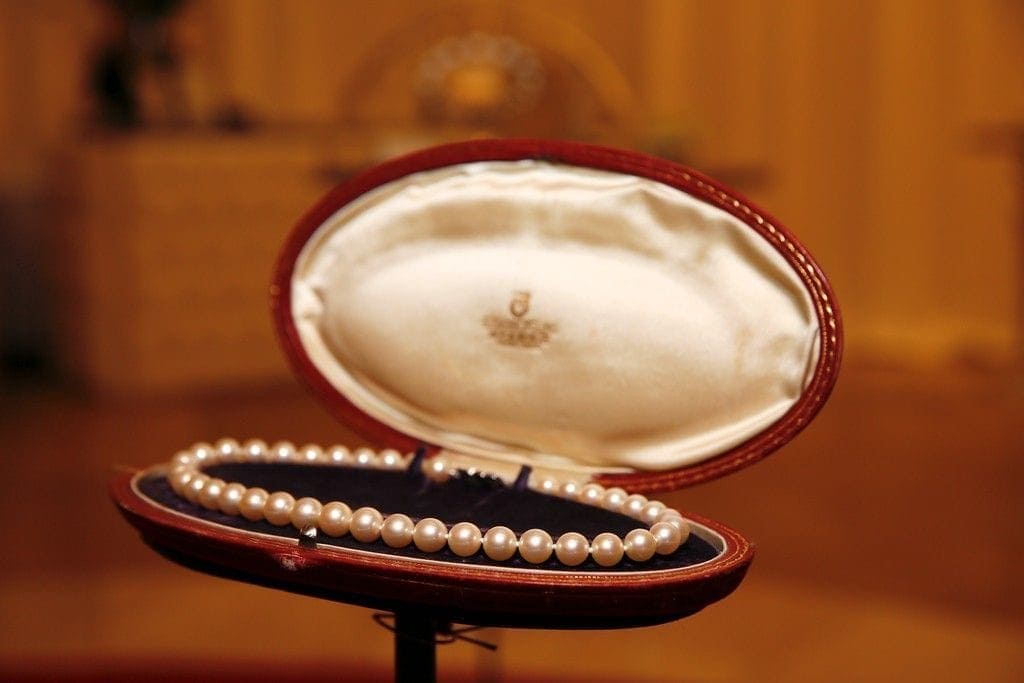
Marilyn Monroe’s famous Akoya pearl necklace on display.
These pearls found their way to the Western world and quickly became popular. Even Marylin Monroe, America’s sweetheart, was given a Mikimoto Akoya necklace by her husband. This drove the fame of Mikimoto’s Akoya pearl necklaces even more and established their reputation as the standard pearl necklace.
Where Are Akoya Pearls Farmed?
Most Akoya pearls come from the country of their origin – Japan. Japanese Akoya pearls are typically considered among the best and the country is the hub of Akoya pearl production. However, China, Thailand and Vietnam are also producers to a lesser extent.
Culturing Akoya Pearls
The Akoya oyster is the smallest pearl producing mollusk. To get it to create these famed pearls, a trained technician inserts a bead nucleus into the gonad of the oyster. The hope is that the oyster will begin to secrete nacre over the bead and slowly build up the pearl.
In reality, only about 50% of the Akoya oysters survive this invasive procedure. The oysters that do survive will start to secrete nacre layer by layer, and the pearls will be ready to harvest in about a year to 18 months.

Akoya oyster in water
Conditions have to be just right for the Akoya oyster to thrive, including water temperature and pH balance. These affect the quality of the nacre so farmers take pains to ensure that the Akoya oyster is perfectly happy.
Caring for Akoya Pearls
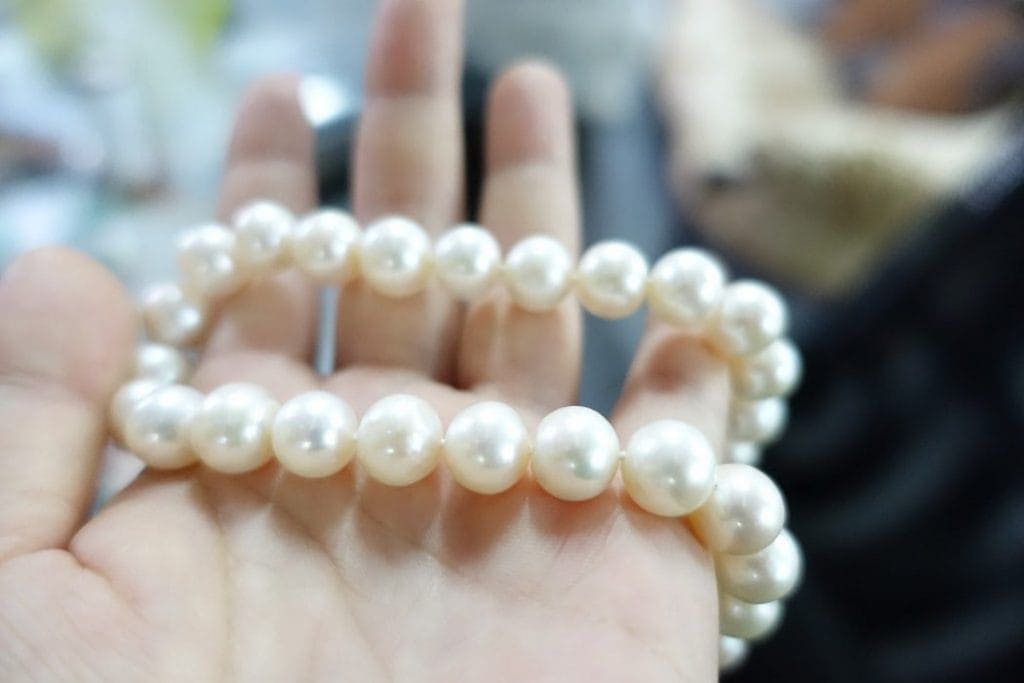
Caring for your Akoya pearls is essential if you want to maintain the pearl’s beautiful luster and body color. Here are some quick tips on best practice for caring for your pearls.
- Wear your Akoya pearls regularly. This ensures that the pearls are kept polished, hydrated and lustrous from the natural body oil. This is easy advice to follow, especially if you’re a pearl lover!
- Never use harsh chemicals on any type of pearl jewelry. Mild soap and water will be the best option. If you can, omit the soap and simply use a soft brush or cloth with water.
- Ultrasonic cleaners are a no-no. The harsh vibrations can easily damage pearls.
- Don’t submerge your pearls for a long time. Remove when doing chores or other activities involving water.
- Store Akoya pearls away from direct sunlight. Sunlight tends to dry out pearls and affect their color and luster.
- Always store your Akoya pearls separately and in a fabric pouch or jewelry box that allows for air circulation. This keeps the pearls from drying out.

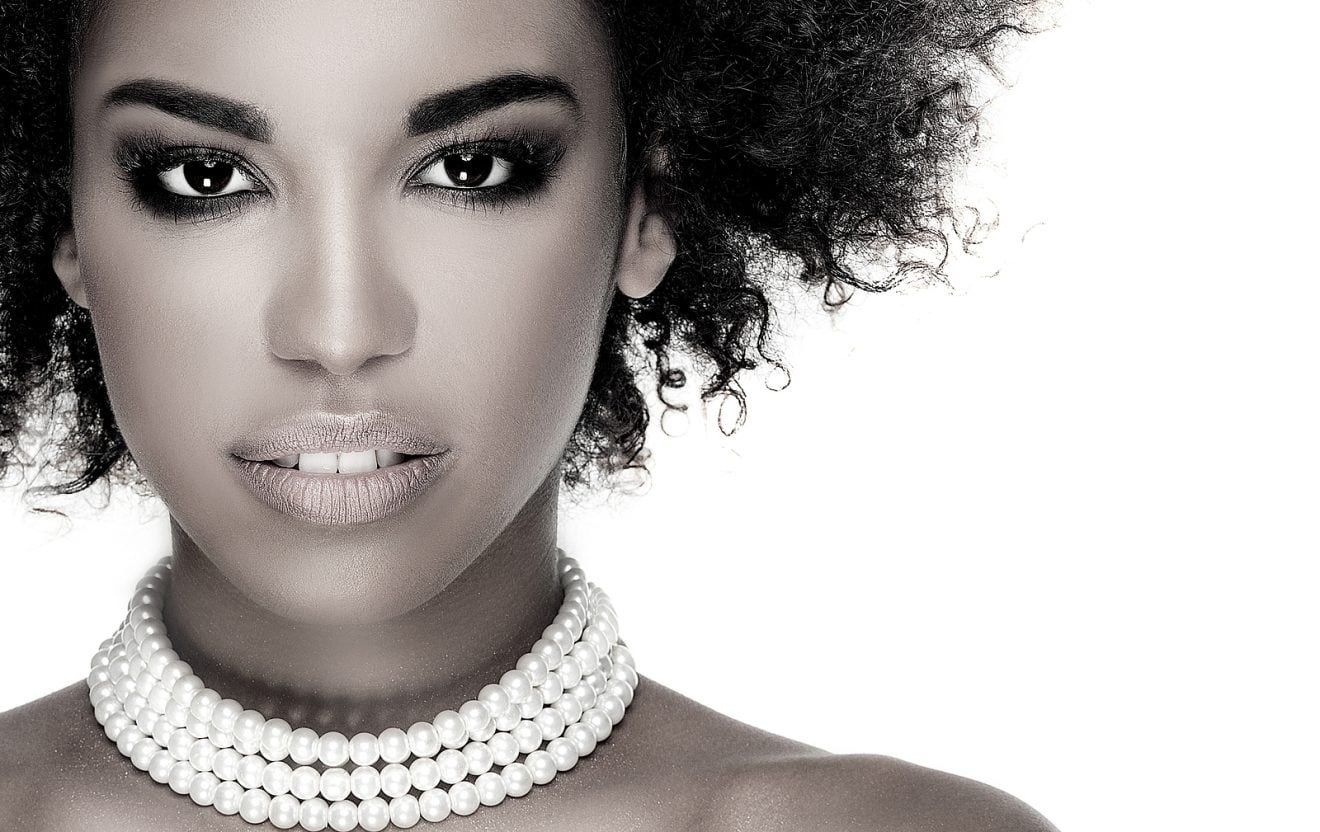

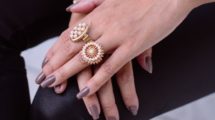


Add Comment